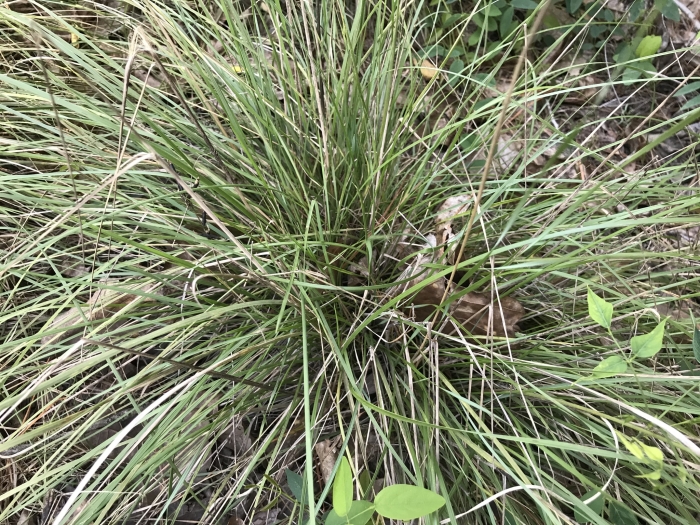Black Oat Grass
(Stipa avenacea)
Black Oat Grass (Stipa avenacea)
/
/

© Raven Dandridge
CC BY 4.0
Image By:
© Raven Dandridge
Recorded By:
Copyright:
CC BY 4.0
Copyright Notice:
Photo by: © Raven Dandridge | License Type: CC BY 4.0 | License URL: http://creativecommons.org/licenses/by/4.0/ | Uploader: feroxara | Publisher: iNaturalist |

















Estimated Native Range
Summary
Piptochaetium avenaceum, commonly known as black oat grass or blackseed needle grass, is a perennial grass native to a variety of habitats in eastern North America, including open woodlands, meadows, and prairies, as well as disturbed areas such as roadsides. It is found in states such as Alabama, Pennsylvania, New York, and Florida. This grass typically grows to a height of 2 to 3 feet (0.6 to 0.9 meters) and is noted for its clumping form and fine-textured foliage. The flowers are inconspicuous, but the seed heads are distinctive with their black seeds and long awns, which appear in late spring to early summer.
Black oat grass is valued for its hardiness and low maintenance, making it suitable for naturalistic plantings and restoration projects. It is also used for erosion control due to its dense root system. In cultivation, it prefers full sun to partial shade and can tolerate a range of soil types, though it thrives in well-drained soils. While generally disease-free, it can occasionally suffer from rust or fungal leaf spots. It is important to note that Piptochaetium avenaceum, also known as Stipa avenacea, is potentially invasive outside its native range, and gardeners should check local regulations before planting.CC BY-SA 4.0
Black oat grass is valued for its hardiness and low maintenance, making it suitable for naturalistic plantings and restoration projects. It is also used for erosion control due to its dense root system. In cultivation, it prefers full sun to partial shade and can tolerate a range of soil types, though it thrives in well-drained soils. While generally disease-free, it can occasionally suffer from rust or fungal leaf spots. It is important to note that Piptochaetium avenaceum, also known as Stipa avenacea, is potentially invasive outside its native range, and gardeners should check local regulations before planting.CC BY-SA 4.0
Plant Description
- Plant Type: Grass
- Height: 2.5-3 feet
- Width: 1.5-2 feet
- Growth Rate: Moderate
- Flower Color: N/A
- Flowering Season: Spring, Summer
- Leaf Retention: Deciduous
Growth Requirements
- Sun: Full Sun, Part Shade
- Water: Low, Medium
- Drainage: Medium, Fast
Common Uses
Border Plant, Drought Tolerant, Low Maintenance
Natural Habitat
Open woodlands, meadows, and prairies
Other Names
Common Names: Tall Oat Grass
Scientific Names: , Stipa avenacea,
GBIF Accepted Name: